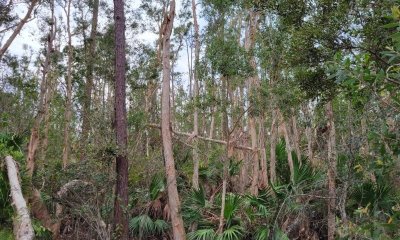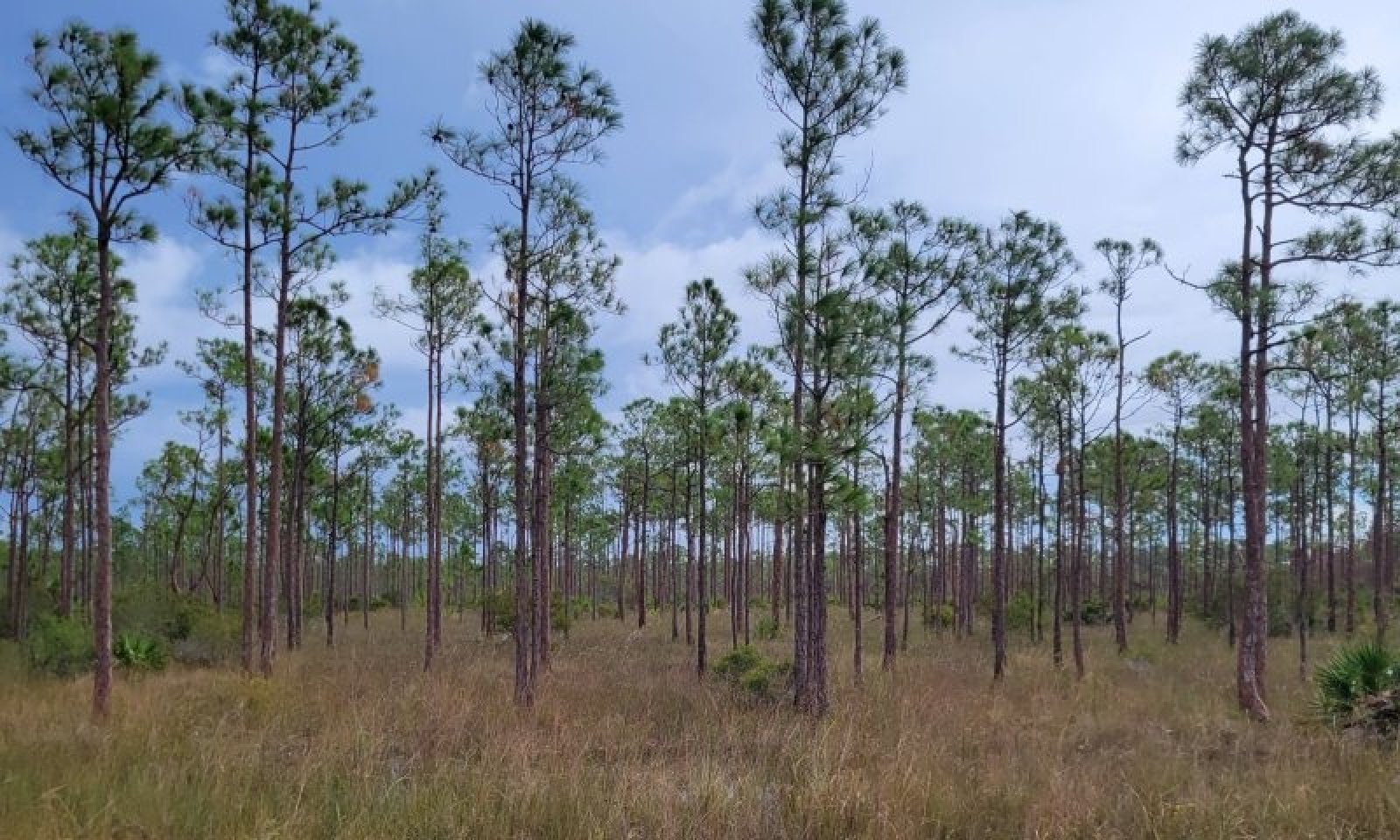
Sandy Flatwoods and Hammocks
Scenario model
Current ecosystem state
Select a state
Management practices/drivers
Select a transition or restoration pathway
-
Transition T1A
Loss of hydroperiod needed to support and maintain hydric soil indicators
More details -
Transition T1B
Livestock Introduction / Grazing Plan Implemented
More details -
Transition T1C
Land Use Conversion / Pasture Development
More details -
Transition T1D
Land Use Conversion / Agricultural Field/ Grove Development
More details -
Transition T1E
Land Use Conversion / Silviculture Plan Implemented
More details -
Transition T1F
Introduction and Establishment of Invasive / Non-Native / Undesirable Species
More details -
Transition T1G
Human Alteration and / or Human Transportation of Soils Materials
More details -
Restoration pathway R2A
Gain of hydroperiod needed to support and maintain hydric soil indicators
More details -
Transition T2A
Livestock Introduction / Grazing Plan Implemented
More details -
Transition T2B
Land Use Conversion / Pasture Development
More details -
Transition T2C
Land Use Conversion / Agricultural Field/ Grove Development
More details -
Transition T2D
Land Use Conversion / Silviculture Plan Implemented
More details -
Transition T2E
Introduction and Establishment of Invasive / Non-Native / Undesirable Species
More details -
Transition T2F
Human Alteration and / or Human Transportation of Soils Materials
More details -
Transition T3A
Removal of Grazing Species / Reintroduction Natural Management Strategies
More details -
Transition T3B
Removal of Grazing Species / Reintroduction Natural Management Strategies
More details -
Transition T3C
Land Use Conversion / Pasture Development
More details -
Transition T3D
Land Use Conversion / Agricultural Field/ Grove Development
More details -
Transition T3E
Land Use Conversion / Silviculture Plan Implemented
More details -
Transition T3F
Introduction and Establishment of Invasive / Non-Native / Undesirable Species
More details -
Transition T4A
Land Use Conversion / Agricultural Field/ Grove Development
More details -
Transition T4B
Land Use Conversion / Silviculture Plan Implemented
More details -
Transition T4C
Introduction and Establishment of Invasive / Non-Native / Undesirable Species
More details -
Transition T5A
Land Use Conversion / Pasture Development
More details -
Transition T5B
Land Use Conversion / Silviculture Plan Implemented
More details -
Transition T5C
Introduction and Establishment of Invasive / Non-Native / Undesirable Species
More details -
Transition T6A
Introduction and Establishment of Invasive / Non-Native / Undesirable Species
More details -
Restoration pathway R7A
Removal of Invasive / Non-Native / Undesirable Species
More details -
Restoration pathway R7B
Removal of Invasive / Non-Native / Undesirable Species
More details -
Restoration pathway R7C
Removal of Invasive / Non-Native / Undesirable Species
More details -
Restoration pathway R7D
Removal of Invasive / Non-Native / Undesirable Species
More details -
Restoration pathway R7E
Removal of Invasive / Non-Native / Undesirable Species
More details -
Restoration pathway R7F
Removal of Invasive / Non-Native / Undesirable Species
More details -
Transition T7A
Human Alteration and / or Human Transportation of Soil Materials
More details -
No transition or restoration pathway between the selected states has been described
Target ecosystem state
Select a state
State 1
Hydric Flats




Description
This state exist as flats on hydric lowlands throughout this MLRA. Plant communities are largely controlled by the influences of a shallow-ground water table and fire. Fire is an integral part of maintaining plant community composition and structure. A shallow-ground water table often attributes to hydric soil indicators and will be reflected in a dominant graminoid understory. Changes in long term hydroperiods may alter the state by losing of the ability to support hydric soil indicators, influencing understory vegetation. Changes in fire management may alter the community phase, influencing the overstory vegetation.
Submodel
State 2
Non-Hydric Flats
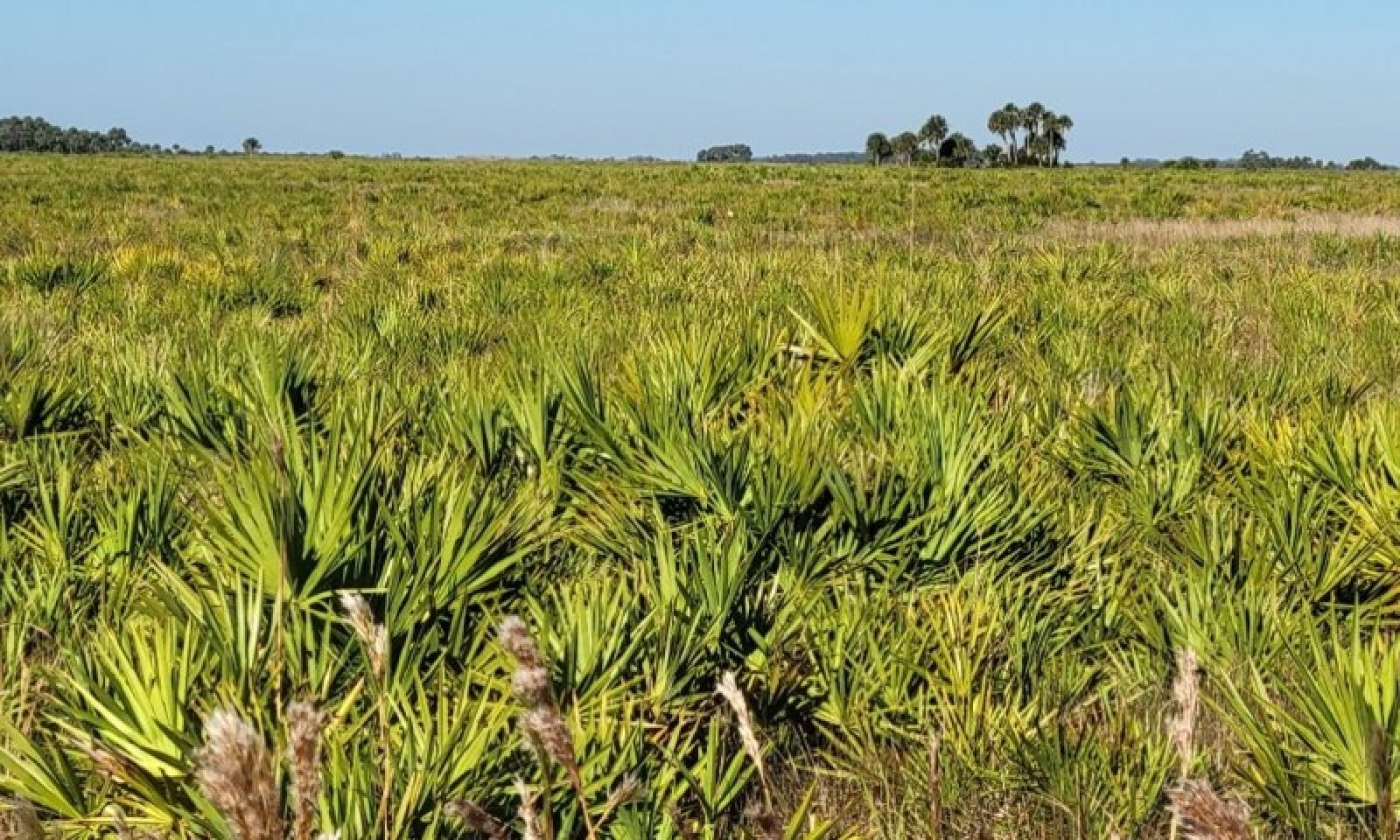




Description
This state exist as flats on non-hydric (mesic) lowlands throughout this MLRA. Plant communities are largely controlled by the influences of fire more than the presence of a shallow-ground water table. Fire is an integral part of maintaining plant community composition and structure and will be reflected by dominantly mesic shrubs and interspersed graminoids. A shallow-ground water table may be present but will be less likely to influence species composition and structure. Changes in long term hydroperiods may alter the state by gaining of the ability to support hydric soil indicators, influencing understory vegetation. Changes in fire management may alter the community phase, influencing the overstory vegetation. These communities have been highly naturalized throughout the state and MLRA due to expansive changes in the ground water table.
Submodel
State 3
Grazed Rangeland
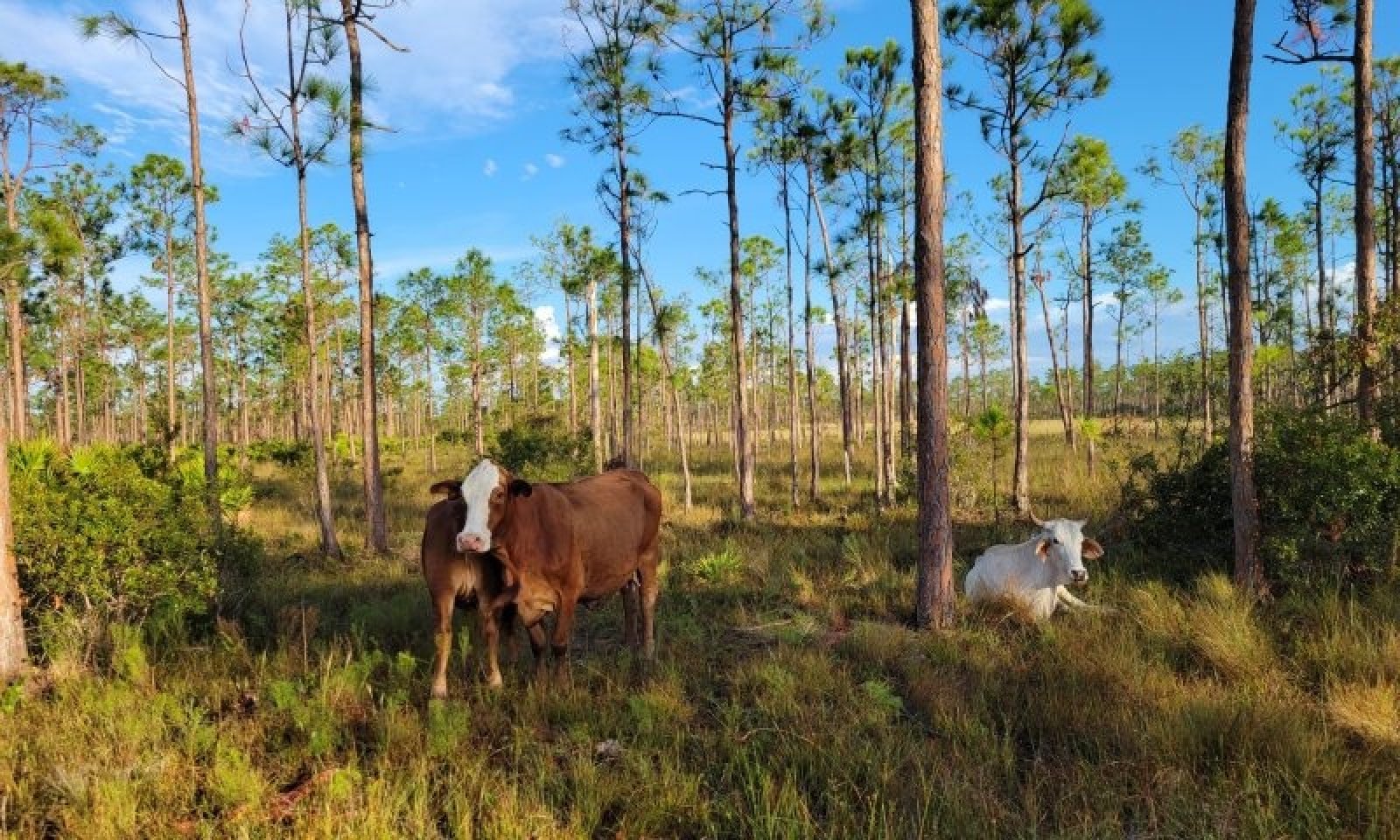


Description
Rangelands are described as lands on which the indigenous vegetation is predominately grasses, grass-like plants, forbs, and possibly shrubs or dispersed trees. Existing plant communities can include both native and introduced plants. Primary export from Florida ranges are cattle and have been present in the state since their first introduction by Spanish explorers in 1521. Native forage production is very good with proper management in this community, with only a slight effect on the community. Proper management will often result in an increase of grasses and reduction of shrubs while also maintaining proper fire intervals. Rangelands provide a diversity of ecosystems and also provide a diverse and significant production of economic benefits and ecosystem goods and services. Livestock production along with sustainable wildlife populations provide for the major direct economic benefits, but also tourism, recreational uses, minerals/energy production, renewable energy, and other natural resource uses can be very significant. Vital ecosystem contributions include clean water, clean air, fish/wildlife habitat, as well as intangible considerations such as historical, cultural, aesthetic and spiritual values. It is strongly advised that consultation with State Resource Conservationist and District Conservationists at local NRCS Service Centers be sought when assistance is needed in developing management recommendations or prescribed grazing practices.
Submodel
State 4
Managed Grassland / Pastureland
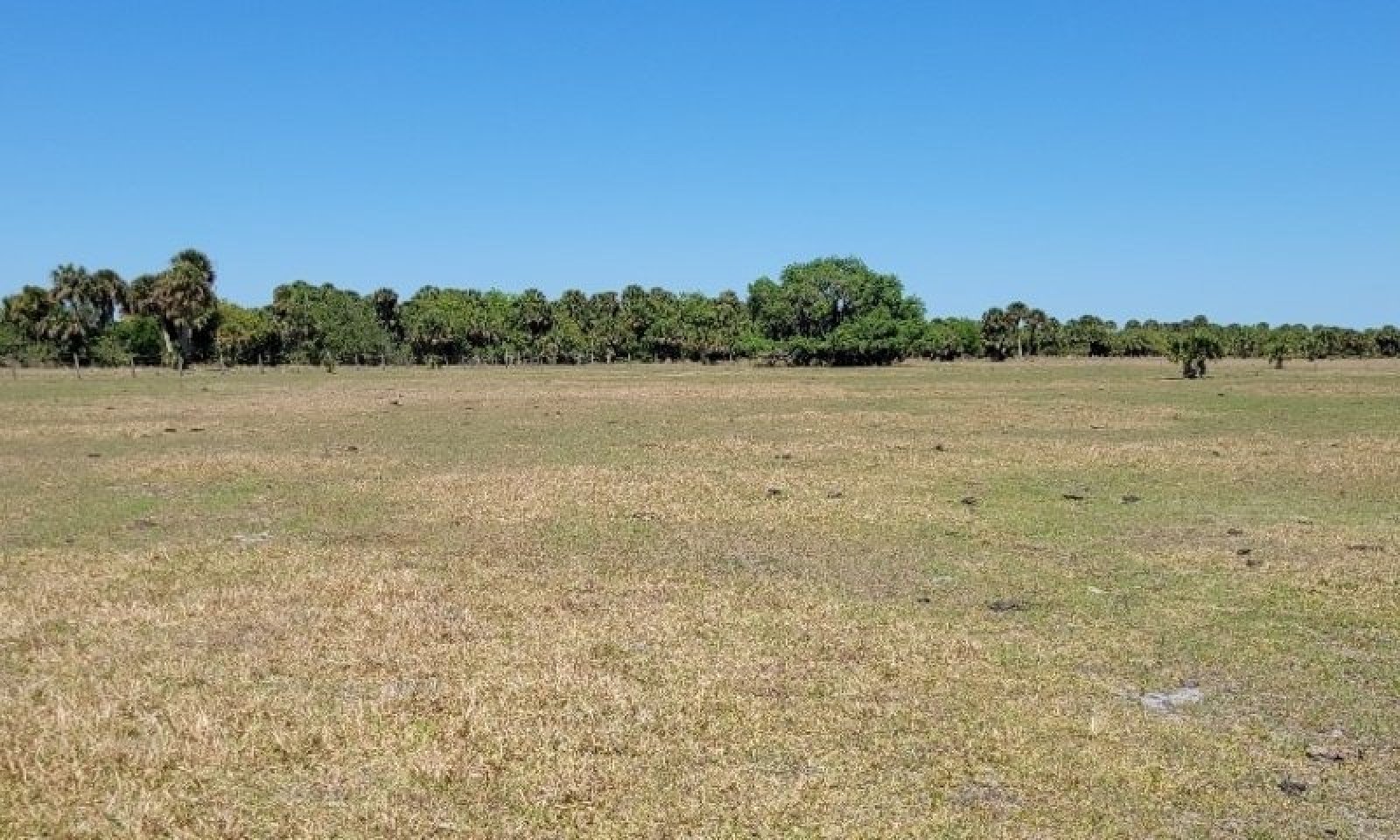


Description
Pasture is a land use type having vegetation cover comprised primarily of introduced or enhanced native forage species that is used for livestock grazing. Pasture vegetation can consist of grasses, legumes, other forbs, shrubs or a mixture. The majority of these forages are introduced, having originally come from areas in other states or continents. Most are now naturalized and are vital components of pasture based grazing systems. Pasture lands provide many benefits other than forage for livestock. Wildlife use pasture as shelter and for food sources. Well managed pasture captures rainwater that is slowly infiltrated into the soil which helps recharge groundwater. Many small pasture livestock operations are near urban areas providing vistas for everyone to enjoy. It is especially important as livestock managers continues to experience extraordinarily high fuel and other input costs. Overgrazed pastures can lead to soil compaction and numerous bare spots, which may then become focal points of accelerated erosion and colonization sites of undesirable plants or weeds. It is strongly advised that consultation with State Resource Conservationist and District Conservationists at local NRCS Service Centers be sought when assistance is needed in developing management recommendations or prescribed grazing practices. This grassland / pastureland state correlates with the 2013 Florida Forage Suitability Group G155XB141FL (Sandy Soils, on Flats on Mesic and Hydric Lowlands).
Submodel
State 5
Agricultural Commodities
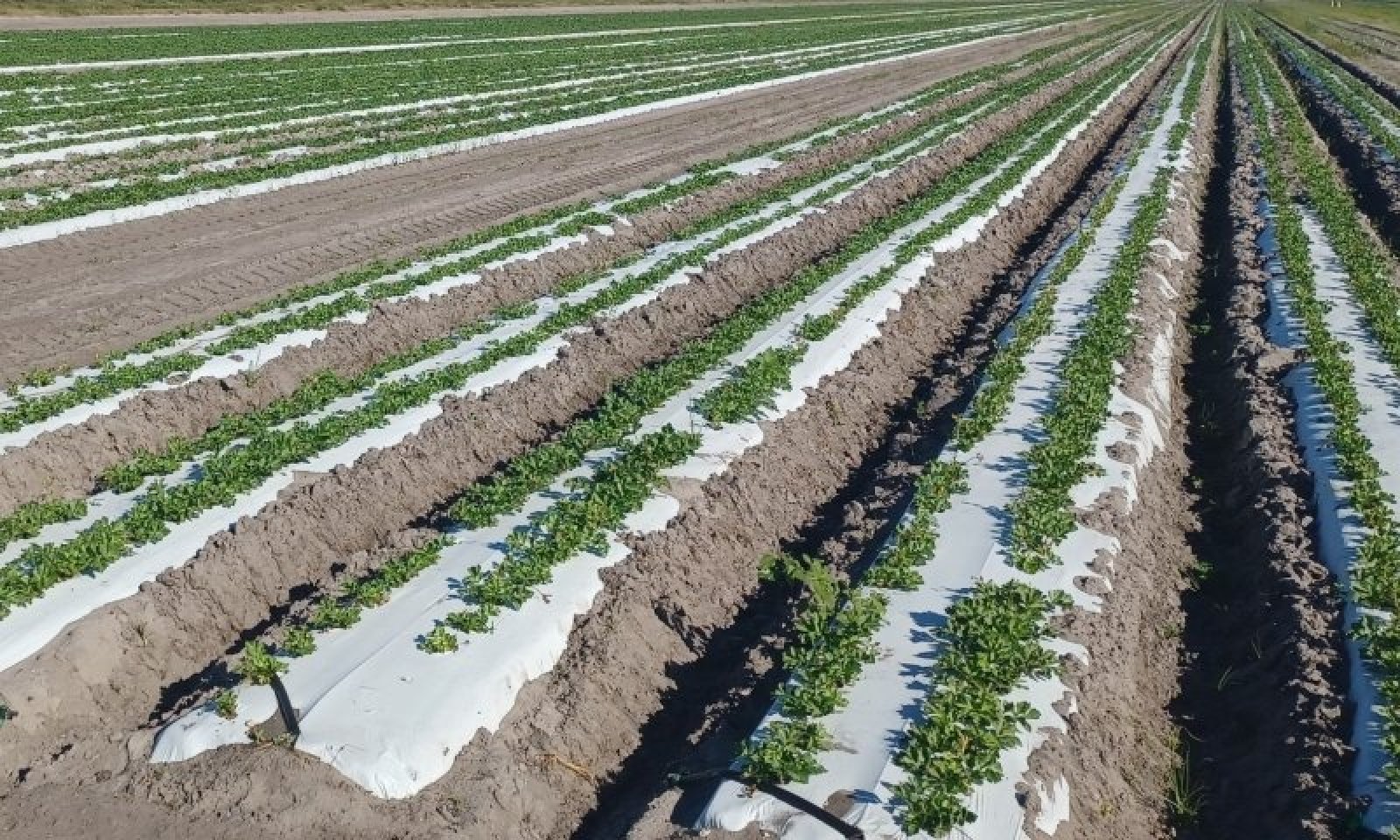




Description
The agriculture industry includes cultivated crops, aquaculture, and apiculture. Cultivated cropland includes areas used for the production of adapted crops for harvest. These areas comprise of land in row crops or close-grown crops that are in a rotation with row or close-grown crops. Primary exports from Florida consist of fruits, greenhouse and nursery products, sugar cane, and the signature export of citrus. Aquaculture includes the cultivation and maintenance of aquatic plants, aquatic reptiles, crustaceans, food/ ornamental fish, shellfish, and other miscellaneous species for harvesting. Apiculture includes the maintenance of honeybees and hives to provide beeswax, honey/ other edible bee products, crop pollination services, and sales of bees to other beekeepers. These areas have been modified resulting in land clearing practices and hydrologic management to fit the growers needs. It is strongly advised that consultation with State Agronomist and District Conservationists at local NRCS Service Centers be sought when assistance is needed in developing management recommendations.
Resilience management
Major natural resource concerns facing cropland include: (1) erosion by wind and water, (2) maintaining and enhancing soil quality, (3) water quality from nutrient and pesticides runoff and leaching, and (4) managing the quantity of water available for irrigation. For more specific information regarding cropland please contact your local NRCS office.
Submodel
States 1, 5 and 2 (additional transitions)
5.1. Vegetables
5.5. Abandoned Agriculture Fields
5.2. Non-Citrus Fruits and Nuts
Description
This state is important and used by silviculturists, landowners, land managers, and the public/private industry. Silviculture is land used in controlling the establishment, growth, composition, health, and quality of forests and woodlands to meet the diverse needs and values of landowners and society such as wildlife habitat, timber, water resources, restoration, and recreation on a sustainable basis. These are forestry practices that include thinning, harvesting, planting, pruning, prescribed burning and site preparation, for managed goals such as wildlife habitat creation or harvesting. Many managed silvicultural lands in Florida include tree plantations for growth of tropical ornamental species such as palms; and lumber, pulp, and paper species such as slash pine, longleaf pine, ornamentals, and eucalyptus.
Resilience management
This state is managed by silviculture prescriptions that will vary based on individual forest stand and management goals.
Submodel
Description
This state represents the dominance of one or multiple non-native or exotic species which outcompetes the native natural community and may significantly alter the composition and structure of the invaded stand by overshading the canopy and understory components and preventing regeneration of native species.
Submodel
Description
These areas include soils that were intentionally and substantially modified by humans for an intended purpose, commonly for terraced agriculture, building support, mining, transportation, and commerce. The alteration is of sufficient magnitude to result in the introduction of a new parent material (human-transported material) or a profound change in the previously existing parent material (human-altered material).They do not include soils modified through standard agricultural practices or farmed soils with unintended wind and water erosion. When a soil is on or above an anthropogenic landform or microfeature, it can be definitely be associated with human activity and is assigned to a unique taxa, usually found as an Urban land complex within that communities natural soil properties (e.g, Myakka fine sand-Urban land complex, 0 to 2 percent slopes).
Characteristics and indicators
Evidence of these areas include soils with manufactured items (e.g. artifacts) present in the profile, human altered-materials (e.g., deeply excavated or deeply plowed soil) or human-transported material (e.g., fill), and position on or above anthropogenic landforms (e.g., flood-control levees) and microfeatures (e.g., drainage ditches). Detailed criteria regarding the identification of anthropogenic (artificial) landforms, human-altered materials, and human-transported material are in the Keys to Soil Taxonomy (Soil Survey Staff, 2014).
Submodel
Mechanism
This is driven by the loss of the hydroperiod needed to maintain and support hydric soil indicators. This is seen widely throughout the state as landscapes are intentionally drained for urban and agricultural purposes or are the unintentional result of landscape drainage. Historical satellite imagery from the 1940s and 1950s often show large tracts of open grasslands (State/Phase 1.1) that have been altered due to changes in hydrology which now support non-hydric poorly drained plant communities (State 2).
Mechanism
This mechanism is driven by the introduction of livestock species to the natural system and implementing a planned grazing strategy. Use of a planned grazing strategy to balance animal forage demand with available forage resources. Timing, duration, and frequency of grazing are controlled and some type of grazing rotation is applied to allow for plant recovery following grazing. It is strongly advised that consultation with State Resource Conservationist and District Conservationists at local NRCS Service Centers be sought when assistance is needed in developing management recommendations or prescribed grazing practices.
Mechanism
Actions required to convert native habitat to pasture or forage production include herbicide application, seedbed preparation, and the establishment of desired plants. Decisions to convert native land to pastureland on this site should be made carefully and continuously evaluated before, during, and after conversion activities. This site is extremely susceptible to soil compaction and erosion. The decision to proceed with this action should be done so in close communication with and guidance from local NRCS Service Centers.
Mechanism
Actions required to convert native habitat to agricultural land include herbicide application, seedbed preparation, and the establishment of desired plants. Decisions to convert land to agriculture on this site should be made carefully and continuously evaluated before, during, and after conversion activities. The decision to proceed with this action should be done so in close communication with and guidance from local NRCS Service Centers.
Mechanism
This pathway consists of prescribed silvicultural activities specifically designed to meet stand compositional and production objectives. Decisions to convert native land to forestry plantations on this site should be made carefully and continuously evaluated before, during, and after conversion activities. This pathway consists of prescribed silvicultural activities specifically designed to meet stand compositional and production objectives.
Mechanism
This transition represents proliferation and dominance of an invasive species. Soil mechanical disturbances can compound this effect and create suitable conditions for invasive species.
Mechanism
This transition is driven by the alteration and/ or transportation of soil materials via anthropogenic means.
Mechanism
This is driven by gaining the hydroperiod needed to maintain and support hydric soil indicators. Once these soil conditions are met this area has the potential to support reference ground cover species composition and structure. Reseeding of native graminoid species to the reference state and removal of excess undesirable species may be required. If wildlife poses a potential threat to restoration some method of control should be used, either repeated intense removal periods of fencing. Fire return intervals should be reintroduced according to the desired community interval period.
Mechanism
This mechanism is driven by the introduction of livestock species to the natural system and implementing a planned grazing strategy. Use of a planned grazing strategy to balance animal forage demand with available forage resources. Timing, duration, and frequency of grazing are controlled and some type of grazing rotation is applied to allow for plant recovery following grazing. It is strongly advised that consultation with State Resource Conservationist and District Conservationists at local NRCS Service Centers be sought when assistance is needed in developing management recommendations or prescribed grazing practices.
Mechanism
Actions required to convert native habitat to pasture or forage production include herbicide application, seedbed preparation, and the establishment of desired plants. Decisions to convert native land to pastureland on this site should be made carefully and continuously evaluated before, during, and after conversion activities. This site is extremely susceptible to soil compaction and erosion. The decision to proceed with this action should be done so in close communication with and guidance from local NRCS Service Centers.
Mechanism
Actions required to convert native habitat to agricultural land include herbicide application, seedbed preparation, and the establishment of desired plants. Decisions to convert land to agriculture on this site should be made carefully and continuously evaluated before, during, and after conversion activities. The decision to proceed with this action should be done so in close communication with and guidance from local NRCS Service Centers.
Mechanism
This pathway consists of prescribed silvicultural activities specifically designed to meet stand compositional and production objectives. Decisions to convert native land to forestry plantations on this site should be made carefully and continuously evaluated before, during, and after conversion activities. This pathway consists of prescribed silvicultural activities specifically designed to meet stand compositional and production objectives.
Mechanism
This transition represents proliferation and dominance of an invasive species. Soil mechanical disturbances can compound this effect and create suitable conditions for invasive species.
Mechanism
This transition is driven by the alteration and/ or transportation of soil materials via anthropogenic means.
Mechanism
This transition is driven by the removal of domesticated grazing species from the system and reintroduction of natural management strategies.
Mechanism
This transition is driven by the removal of domesticated grazing species from the system and reintroduction of natural management strategies.
Mechanism
Actions required to convert altered land use to pasture or forage production include herbicide application, seedbed preparation, and the establishment of desired plants. Decisions to convert to pastureland on this site should be made carefully and continuously evaluated before, during, and after conversion activities. This site is extremely susceptible to soil compaction and erosion. The decision to proceed with this action should be done so in close communication with and guidance from local NRCS Service Centers.
Mechanism
Actions required to convert altered land use to agricultural land include herbicide application, seedbed preparation, and the establishment of desired plants. Decisions to convert land to agriculture on this site should be made carefully and continuously evaluated before, during, and after conversion activities. The decision to proceed with this action should be done so in close communication with and guidance from local NRCS Service Centers.
Mechanism
This pathway consists of prescribed silvicultural activities specifically designed to meet stand compositional and production objectives. Decisions to convert altered land use to forestry plantations on this site should be made carefully and continuously evaluated before, during, and after conversion activities. This pathway consists of prescribed silvicultural activities specifically designed to meet stand compositional and production objectives.
Mechanism
This transition represents proliferation and dominance of an invasive species. Soil mechanical disturbances can compound this effect and create suitable conditions for invasive species.
Mechanism
Actions required to convert altered land use to agricultural land include herbicide application, seedbed preparation, and the establishment of desired plants. Decisions to convert land to agriculture on this site should be made carefully and continuously evaluated before, during, and after conversion activities. The decision to proceed with this action should be done so in close communication with and guidance from local NRCS Service Centers.
Mechanism
This pathway consists of prescribed silvicultural activities specifically designed to meet stand compositional and production objectives. Decisions to convert altered land to forestry plantations on this site should be made carefully and continuously evaluated before, during, and after conversion activities. This pathway consists of prescribed silvicultural activities specifically designed to meet stand compositional and production objectives.
Mechanism
This transition represents proliferation and dominance of an invasive species. Soil mechanical disturbances can compound this effect and create suitable conditions for invasive species.
Mechanism
Actions required to convert altered land use to agricultural land include herbicide application, seedbed preparation, and the establishment of desired plants. Decisions to convert land to agriculture on this site should be made carefully and continuously evaluated before, during, and after conversion activities. The decision to proceed with this action should be done so in close communication with and guidance from local NRCS Service Centers. This is a common transition from agricultural land, dominantly citrus groves, which were abandoned and then converted to pasture within this MLRA.
Mechanism
This pathway consists of prescribed silvicultural activities specifically designed to meet stand compositional and production objectives. Decisions to convert altered land to forestry plantations on this site should be made carefully and continuously evaluated before, during, and after conversion activities. This pathway consists of prescribed silvicultural activities specifically designed to meet stand compositional and production objectives.
Mechanism
This transition represents proliferation and dominance of an invasive species. Soil mechanical disturbances can compound this effect and create suitable conditions for invasive species.
Mechanism
This transition represents proliferation and dominance of an invasive species. Soil mechanical disturbances can compound this effect and create suitable conditions for invasive species.
Mechanism
The establishment of, or a return to, natural habitat conditions following a previous invasive / non-native / undesirable species infestation may be possible in some areas. Successful actions will require relentless efforts that include removal of the species via chemical or mechanical or biological means. In some extreme cases, restoration attempts could result in greater erosion and worsening of local conditions. Please consult with District and Soil Conservationists at local NRCS Field Offices for advice and guidance on land restoration attempts on invaded areas.
Mechanism
The establishment of, or a return to, natural habitat conditions following a previous invasive / non-native / undesirable species infestation may be possible in some areas. Successful actions will require relentless efforts that include removal of the species via chemical or mechanical or biological means. In some extreme cases, restoration attempts could result in greater erosion and worsening of local conditions. Please consult with District and Soil Conservationists at local NRCS Field Offices for advice and guidance on land restoration attempts on invaded areas.
Mechanism
The establishment of, or a return to, altered land use conditions following a previous invasive / non-native / undesirable species infestation may be possible in some areas. Successful actions will require relentless efforts that include removal of the species via chemical or mechanical or biological means. In some extreme cases, restoration attempts could result in greater erosion and worsening of local conditions. Please consult with District and Soil Conservationists at local NRCS Field Offices for advice and guidance on land restoration attempts on invaded areas.
Mechanism
The establishment of, or a return to, altered land use conditions following a previous invasive / non-native / undesirable species infestation may be possible in some areas. Successful actions will require relentless efforts that include removal of the species via chemical or mechanical or biological means. In some extreme cases, restoration attempts could result in greater erosion and worsening of local conditions. Please consult with District and Soil Conservationists at local NRCS Field Offices for advice and guidance on land restoration attempts on invaded areas.
Mechanism
The establishment of, or a return to, altered land use conditions following a previous invasive / non-native / undesirable species infestation may be possible in some areas. Successful actions will require relentless efforts that include removal of the species via chemical or mechanical or biological means. In some extreme cases, restoration attempts could result in greater erosion and worsening of local conditions. Please consult with District and Soil Conservationists at local NRCS Field Offices for advice and guidance on land restoration attempts on invaded areas.
Mechanism
The establishment of, or a return to, altered land use conditions following a previous invasive / non-native / undesirable species infestation may be possible in some areas. Successful actions will require relentless efforts that include removal of the species via chemical or mechanical or biological means. In some extreme cases, restoration attempts could result in greater erosion and worsening of local conditions. Please consult with District and Soil Conservationists at local NRCS Field Offices for advice and guidance on land restoration attempts on invaded areas.
Model keys
Briefcase
Add ecological sites and Major Land Resource Areas to your briefcase by clicking on the briefcase (![]() ) icon wherever it occurs. Drag and drop items to reorder. Cookies are used to store briefcase items between browsing sessions. Because of this, the number of items that can be added to your briefcase is limited, and briefcase items added on one device and browser cannot be accessed from another device or browser. Users who do not wish to place cookies on their devices should not use the briefcase tool. Briefcase cookies serve no other purpose than described here and are deleted whenever browsing history is cleared.
) icon wherever it occurs. Drag and drop items to reorder. Cookies are used to store briefcase items between browsing sessions. Because of this, the number of items that can be added to your briefcase is limited, and briefcase items added on one device and browser cannot be accessed from another device or browser. Users who do not wish to place cookies on their devices should not use the briefcase tool. Briefcase cookies serve no other purpose than described here and are deleted whenever browsing history is cleared.
Ecological sites
Major Land Resource Areas
The Ecosystem Dynamics Interpretive Tool is an information system framework developed by the USDA-ARS Jornada Experimental Range, USDA Natural Resources Conservation Service, and New Mexico State University.





